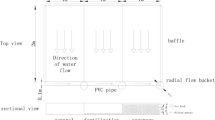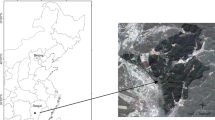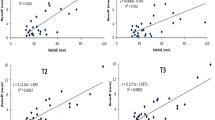Abstract
Nitrogen (N) losses from agricultural fields have been extensively studied. In contrast, surface runoff and N losses have rarely been considered for bamboo forests that are widespread in regions such as southern China. The thriving of bamboo industries has led to increasing fertilizer use in bamboo forests. In this study, we evaluated surface runoff and N losses in runoff following different fertilization treatments under field conditions in a bamboo (Phyllostachys pubescens) forest in the catchment of Lake Taihu in Jiangsu, China. Under three different fertilization regimes, i.e., control, site-specific nutrient management (SSNM), and farmer's fertilization practice (FFP), the water runoff rate amounted to 356, 361, and 342 m3 ha−1 and accounted for 1.91, 1.98, and 1.85 % of the water input, respectively, from June 2009 to May 2010. The total N losses via surface runoff ranged from 1.2 to 1.8 kg ha−1. Compared with FFP, the SSNM treatment reduced total nitrogen (TN) and dissolved nitrogen (DN) losses by 31 and 34 %, respectively. The results also showed that variations in N losses depended mainly on runoff fluxes, not N concentrations. Runoff samples collected from all treatments throughout the year showed TN concentrations greater than 0.35 mg L−1, with the mean TN concentration in the runoff from the FFP treatment reaching 8.97 mg L−1. The loss of NO3 −–N was greater than the loss of NH4 +–N. The total loss of dissolved organic nitrogen (DON) reached 23–41 % of the corresponding DN. Therefore, DON is likely the main N species in runoff from bamboo forests and should be emphasized in the assessment and management of N losses in bamboo forest.




Similar content being viewed by others
References
Aber JD, McDowell W, Nadelhoffer K, Magill A, Berntsen G, Kamakea M (1998) Nitrogen saturation in temperate forest ecosystems—hypotheses revisited. Bioscience 48:921–934
Andersson P, Berggren D, Johnsson L (2001) 30 years of N fertilization in a forest ecosystem—the fate of added N and effects on N fluxes. Water Air Soil Poll 148:87–109
APHA (American Public Health Association) (1998) Standard methods for the examination of water and waste water, 20th edn. American Public Health Association, Washington
Bergholm J, Berggren D, Alavi G (2003) Soil acidification induced by ammonium sulphate addition in a Norway spruce forest in southwest Sweden. Water Air Soil Poll 5:802–812
Christou M, Avramides EJ, Roberts JP (2005) Dissolved organic nitrogen in contrasting agricultural ecosystems. Soil Biol Biochem 37:1560–1563
Di BJ, Wang ZP (1996) Flora of China (vo1 9, section 1). Science Press, Beijing, (vo1 9, section 1), In Chinese
Dise NB, Wright RF (1995) Nitrogen leaching from European forests in relation to nitrogen deposition. Forest Ecol Manag 71:153–161
Fang YT, Gundersen P, Mo JM, Zhu WX (2009) Nitrogen leaching in response to increased nitrogen input in subtropical monsoon forests in southern China. Forest Ecol Manag 257:332–342
Jin ZD, Cheng HX, Chen L, Li XD, Zhu GW, Zhang GM, Qian N (2010) Concentrations and contamination trends of heavy metals in the sediment cores of Taihu Lake, East China, and their relationship with historical entrophication. Chin J Geochem 1:33–41
Liu GS, Jiang NH, Zhang LD (1996) Soil physical and chemical analysis and description of soil profiles. Standards Press of China, Beijing
Magill AH, Aber JD, Currie WS, Nadelhoffer KJ, Martin ME, McDowell WH (2004) Ecosystem response to 15 years of chronic nitrogen additions at the Harvard Forest LTER, Massachusetts, USA. Forest Ecol Manag 196:7–28
Matlou MC, Haynes RJ (2006) Soluble organic matter and microbial biomass C and N in soils under pasture and arable management and the leaching of organic C, N and nitrate in a lysimeter study. Appl Soil Ecol 34:160–167
Moldan F, Kjonaas OJ, Stuanes AO, Wright RF (2006) Increase nitrogen in runoff and soil following 13 years of experimentally increased nitrogen deposition to a coniferious-forested catchment at Gardsjon, Sweden. Environ Pollut 144:610–620
Olsen SR, Sommers LE (1982) In: Page et al. AL (ed) Methods of soil analysis. Part. 2. 2nd ed. Agron. Monogr. 9. ASA and SSSA, Madison, WI
Perakis SS, Hedin LO (2002) Nitrogen loss from unpolluted South American forests mainly via dissolved organic compounds. Nature 415:416–419
Qin BQ, Wu QL, Luo LC, Zhang YL (2007) Environmental issues of Lake Taihu, China. Hydrobiologia 581:3–14
Shen H, Cao ZH, Xu ZH (2000) Effects of fertilization on different carbon fractions and carbon management index in soils. Acta Pedologica Sinica 37:166–173
Smith VH, Tilman GD, Nekola JC (1999) Eutrophication: impacts of excess nutrient inputs in freshwater, marine and terrestrial ecosystems. Environ Pollut 100:179–196
Teixeira PC, Misra RK (2005) Measurement and prediction of nitrogen loss by simulated erosion events on cultivated forest soils of contrasting structure. Soil Till Res 83:204–217
Wang GH, Zhang QC, Huang CY (2003) SSNM—a new approach to increasing fertilizer N use efficiency and reducing N loss from rice fields. Journal of Zhejiang University 29:67–70
Wang T, Hu L, Guo XM, Du TD (2006) Study on the relation between content N and SPAD in bamboo's leaf. Journal of Anhui Agricultural Science 34:3670–3671
Witt C, Dobermann A (2002) A site-specific nutrient management approach for irrigated, lowland rice in Asia. Better Crops International 16(1):20–24
Zhang QL, Chen YX, Jilani G, Shamsi IH, Yu QG (2010) Model AVSWAT apropos of simulating non-point source pollution in Taihu lake basin. J Hazard Mater 174:824–830
Zhang YX, Zhang ZQ, Zhang XJ, Liu QY, Jin J (2001) Population dynamics of phytophagous and predatory mites (Acari: Tetranychidae, Eriophyidae, Phytoseiidae) on bamboo plants in Fujian, China. Exp Appl Acarol 25:383–391
Zhang ZJ, Zhu YM, Cheng J, Bailey JS (2002) Phosphorus export from a paddy rice field during flood events. Soil Use Manage 18:316–323
Zhang XQ, Chen QW (2011) Spatial-temporal characteristic of water quality in Lake Taihu and its relationship with algal bloom. Journal of Lake Science 23(3):339–347
Zhong Z, Makeshin F (2003) Soluble organic nitrogen in temperate forest soils. Soil Biol Biochem 35:333–338
Zhou CF (1998) Cultivate and utilize of bamboo. Bamboo research 17:1–5
Acknowledgments
This research was financially supported by the National Basic Research Program (973 Program) of China (2013CB127403), the National Project of Scientific and Technical Supporting Programs Funded by Ministry of Science & Technology of China (2012BAC17B02), the National Natural Science Foundation of China (nos. 30971859 and 31272237), the Science & Research Program of Zhejiang Province (no. 2010C32102), the Fundamental Research Funds for the Central Universities and the National Key Science and Technology Project: Water Pollution Control and Treatment (2008ZX07101-006-6), and the International Plant Nutrition Institute (IPNI). The authors thank X.N. Xu and M.C. Yu for their assistance in the field and laboratory.
Author information
Authors and Affiliations
Corresponding author
Additional information
Responsible editor: Hailong Wang
Qichun Zhang and Imran Haider Shamsi both contributed equally to this work and paper.
Capsule
The dissolved organic nitrogen is an important component of overall runoff nitrogen fluxes in bamboo forests and variations in nitrogen losses depend mainly on runoff fluxes, not the nitrogen concentrations.
Rights and permissions
About this article
Cite this article
Zhang, Q., Shamsi, I.H., Wang, J. et al. Surface runoff and nitrogen (N) loss in a bamboo (Phyllostachys pubescens) forest under different fertilization regimes. Environ Sci Pollut Res 20, 4681–4688 (2013). https://doi.org/10.1007/s11356-012-1429-4
Received:
Accepted:
Published:
Issue Date:
DOI: https://doi.org/10.1007/s11356-012-1429-4




